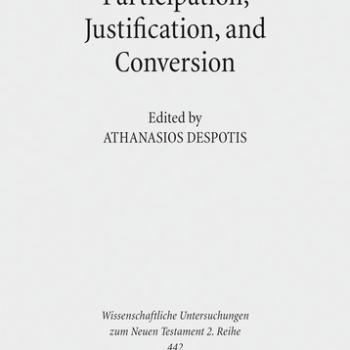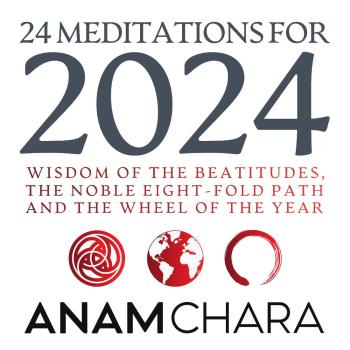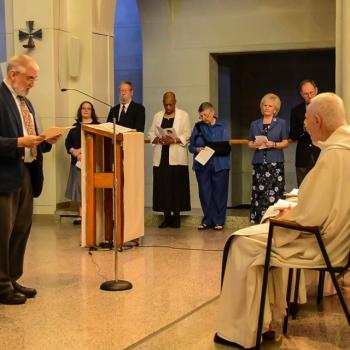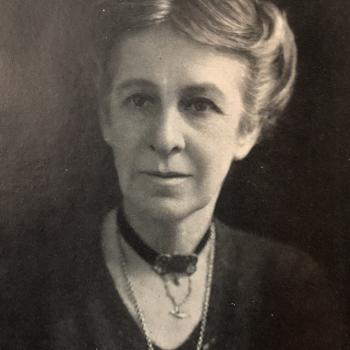So what is contemplation?
In this video I talk about contemplation, beginning with the definition found in the glossary to the Catholic Catechism:
A form of wordless prayer in which mind and heart focus on God’s greatness and goodness in affective, loving adoration; to look on Jesus and the mysteries of his life with faith and love.

It may not be the best definition out there, but there’s a lot to work with here. Contemplation is…
- wordless — it’s not something you can think. It’s beyond language, beyond concepts, beyond philosophy and theology, beyond ordinary human logic or reason. This is not to say contemplation is illogical or irrational — its wordlessness doesn’t mean it’s less than human understanding, but rather that it takes us to a place beyond the capacity of mortal language. The heart of contemplation is silence, which is why monasteries are places of profound silence: they need to be in order to foster the contemplation that monks give their lives for. For the ordinary person like you and me, there are two take-aways here: first, contemplation requires deep silence, externally but especially internally; and second, any attempt to dissect contemplative prayer with the scalpel of human logic and brainpower is doomed to fail.
- prayer — this one word is the key to understanding the difference between Christian contemplation and certain other meditation practices, for example mindfulness-based stress reduction. Contemplation is not ultimately about self-awareness or self-investigation, even though a sustained practice of contemplative prayer will in fact foster a greater ability to know one’s own self than perhaps any other practice could yield. But that is not the goal or purpose of Christian contemplation: it ultimately points us beyond ourselves into the heart of God. Put another way, contemplation is profoundly relational. It requires an “I” and a “thou” (or “you”). When we gaze attentively and silently into the mystery of love, as Christians we trust and believe in faith that Love gazes back. It is in that mutual, wordless beholding that contemplative prayer happens.
- mind and heart — contemplative prayer is not just something we think about. It is holistic and integral. It is an act that requires the attention of our cognitive capacity (but not the ongoing commentary of our mind’s inner chatter) coupled with the embodied devotion that arises from the human heart. Great contemplatives in history, such as the author of the fourteenth century mystical masterpiece The Cloud of Unknowing, insist that mental understanding can only take us so far in our quest to find God — but that our hearts, responding to the call of God’s love, can (through grace) take us all the way into the heart that loved us first. But contemplation is not only a devotional exercise: it brings together mental clarity and emotional serenity, in a single unified act of loving response.
- affective, loving adoration — the focus of contemplation is holistic and integral, encompassing the entire person: mind and heart. Yet the “work” of contemplation is entirely what we traditionally associate with the heart: love and adoration. This is a prayer of giving our full and uncensored capacity for responding to God, to God in silence. Now, many people may not particularly feel loving toward God: they may be afraid of God, or angry at God, or merely suspicious that God doesn’t exist. For people in those places, contemplative practice is likely to be difficult. Yet even for the mostly saintly among us, the heart of contemplative practice is grace — and it is by grace that we are able to respond to God’s infinite love with the paltry adoration that we can muster. The key is not how “big” or “pure” our love is: we are simply asked to love, as best we can, and God’s grace does the rest.
- look on Jesus — this brings us back to prayer. One of the challenges for Christian contemplatives is a temptation to approach God in such an abstract or philosophical way that our prayer ends up focussing on a concept rather than a person. By keeping our contemplation Christ-centered, we more easily avoid that particular pitfall. Many mystics (Teresa of Avila and Julian of Norwich are two examples) insist that Christian spirituality must center on the humanity of Christ. This is important not only because it reminds us that God created humans as good, but also that the God who loves us is a God who truly became one of us — and remains with us, through the Holy Spirit.
- the mysteries of his life — many people may be familiar with the Rosary, a popular Catholic devotional practice that includes meditating on various “mysteries” from the life of Christ or the life of Mary. At it’s most basic, this definition of contemplation points to a similar direction: that meditation on those mysteries can itself be a deeply contemplative practice. But the mysteries of Christ’s life are always invitations into the heart of God: into Divine love, Divine providence, Divine felicity, and Divine union. So to contemplate the external moments of key events in the life of Christ always points to a deeper, interior contemplation on the truths and mysteries of God’s grace and compassion, encoded within those “mysteries” (the word mystery is related to a hidden truth, so when we contemplate, even in pure silence, we are opening our hearts to the hidden truths of God’s presence, mercy and love).
I hope this is helpful. Please let me know if you have other insights into contemplation you would like to share with me, or if you have questions about the Christian spiritual life that you would like me to address in this blog. Please feel free to contact me via the comment field before, or Facebook (see link below).

This is the third of six videos I filmed in the summer of 2015. See the previous videos by clicking on these links: Julian of Norwich, and Mysticism.
Enjoy reading this blog?
Click here to become a patron.


















